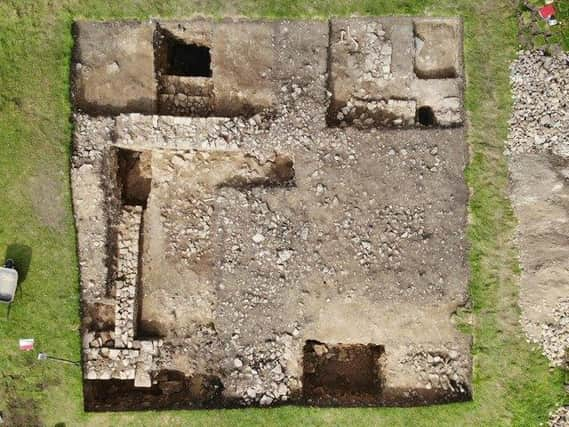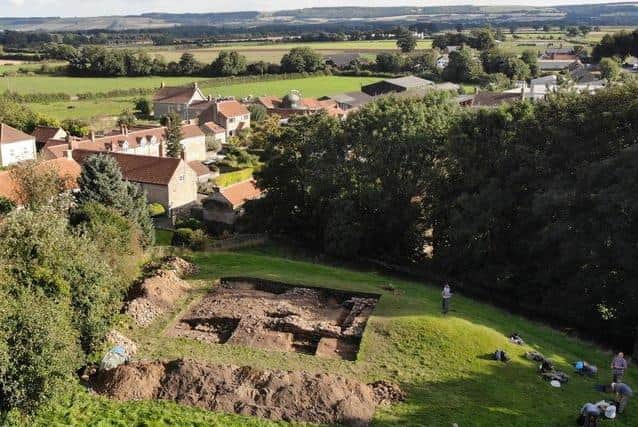Archaeologists unearth 'important' 12th Century building in Scarborough owned by 'someone with a great deal of wealth'


The excavation came after test digs in 2018 and 2019 located several medieval buildings and discovered foundations of a 1.4m wide stone boundary wall which once overlooked the village.
The privately owned site is protected in law as a Scheduled Ancient Monument, meaning the team had to get permission from Historic England to dig there.
Advertisement
Hide AdAdvertisement
Hide AdThis dig was on a far larger scale than the previous two in an attempt to expose as much as possible of one of the medieval buildings located in 2018.


A trench measuring 10m by 10m revealed three sides of a massive stone building,located on the south side of the hill looking out over the Vale of Pickering.
Trevor Pearson, former head of the Graphics Team at English Heritage who led the excavation, said: “I’m satisfied to say that the big stone building is 12th century. I think it is likely to have been built a hundred years or so after the Norman Conquest and then likely to be gone by 1350, although as yet, we’re not sure why.
“It’s an important find for the village and a strongly fortified manor house fits with the tradition of it being called Castle Hill. ”
Advertisement
Hide AdAdvertisement
Hide AdPart of a ground-floor window or door survived, picked out in fine ashlar masonry and showing that the building belonged to someone with a great deal of wealth.


The team are currently awaiting the results of Carbon 14 data testing and putting a report together on their discoveries.
The remains of the building have now been reburied.
Early next year the team hope to continue their research by working with villagers to dig small test pits in gardens to look for evidence of medieval Brompton beyond the Castle Hill site.